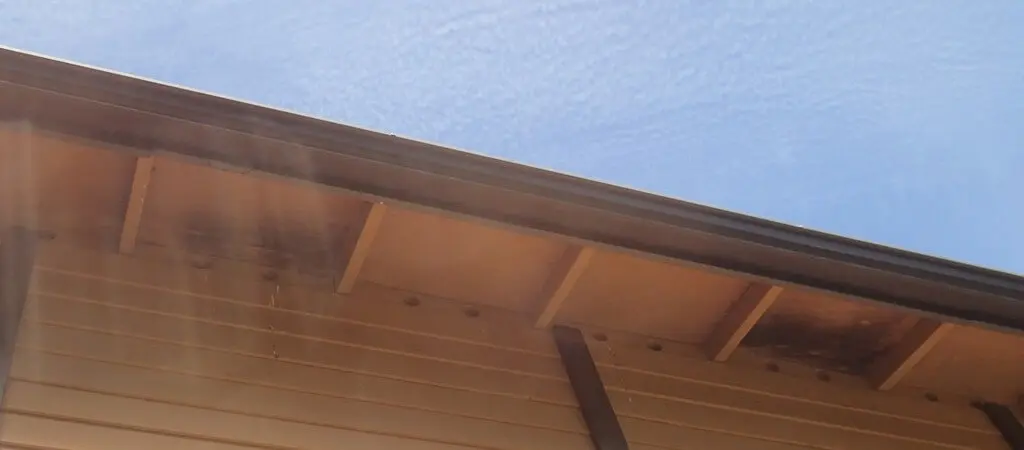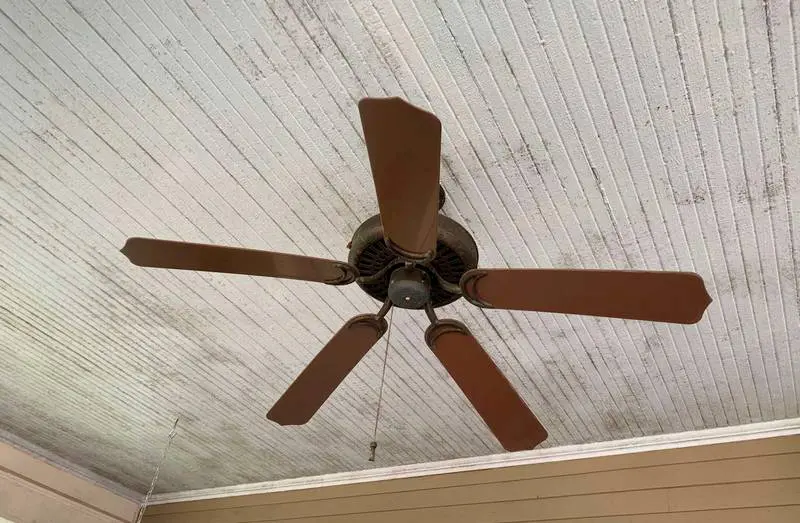Soffit Mold Issues
Few areas of mold growth are more mysterious and confusing than soffit mold growth. Unlike growth in other areas of a home, soffit growth does not appear to follow any reliable pattern. One house can suffer from major mold growth, while the neighbor’s home is spotless. Despite these inconsistencies, two variables have been found that determine mold growth – paint quality and settled dust.

Latex paint, unfortunately, is a perfect food source for mold growth. To combat this, paint manufacturers add different antifungal additives, with varying degrees of success. The second variable, settled dust, also can have a profound effect on mold growth rates. It occurs when a thin layer of dust settles on the paint. This can occur on vertical and even overhanging surfaces. Unfortunately, even this settled dust can act as a food source for mold, effectively nullifying the benefit of high-quality, anti-fungal paint. What is the solution? Use high-quality paint and regularly clean problem areas.
FAQ’s related to soffit mold issues.
What does the mold growth typically look like?
Soffit mold almost always appears with a dark grey or black coloration. The growth pattern tends towards radiating, circular spotting. Dimensionally, the mold growth is typically flat.
How is mold growth removed from soffits?
Soffit mold growth can often be removed without professional remediation. Because it is outside the conditioned airspace of the home, there is little danger of affecting the indoor air quality. Soffit mold will typically disappear or greatly diminish after a treatment with store bought cleaners.
What steps are necessary to prevent mold growth from returning to the soffits?
Permanently preventing the mold growth from returning can be difficult. Regular cleaning and pressure washing, combined with chemical treatments can help. Several companies, including Zinsser, offer exterior grade paint products with warranties against mold growth.
PHOTOS OF MOLD GROWTH ON SOFFITS
*Heads up – I earn a small commission on sales through Amazon links. This helps cover the expense of running the website (and answering your questions!)
Got a question? Ask it here and we'll post the answer below
We have mold that keeps growing back on our porch ceiling. We spray it 2x year (Concrobium house and deck wash), but it keeps coming back and never seems to remove it all. In your opinion how can we solve the issue for good? Humidity is very high in GA.
In my experience, the only way to prevent exterior growth like this is by using a very high quality exterior grade paint with a mildicide additive. If you can’t find a paint with a mildicide, most paint and hardware stores will sell a mildicide additive powder that can be mixed into regular paint. Also, stay away from matte finishes, they absorb much more water and are more difficult to clean. The glossier the finish, the less likely mold growth will return.


